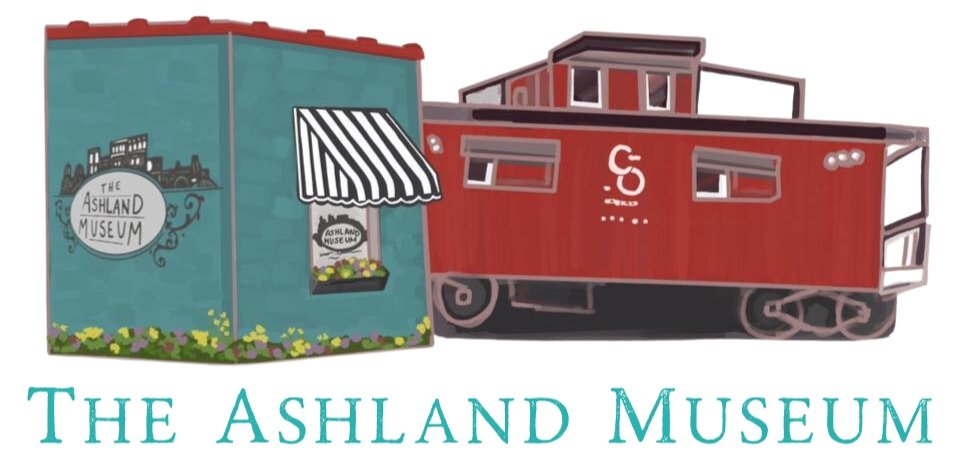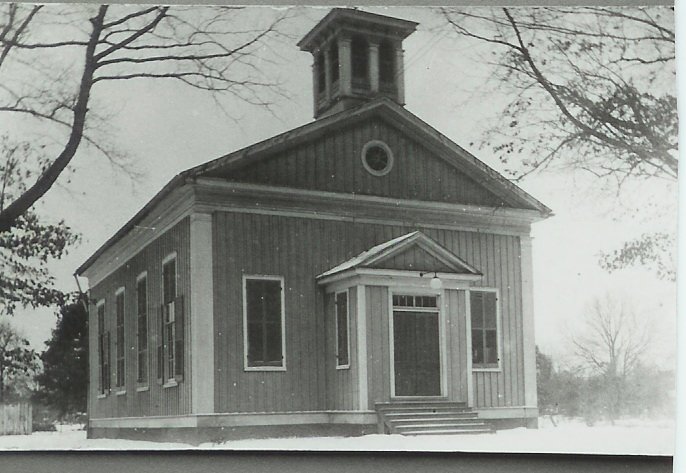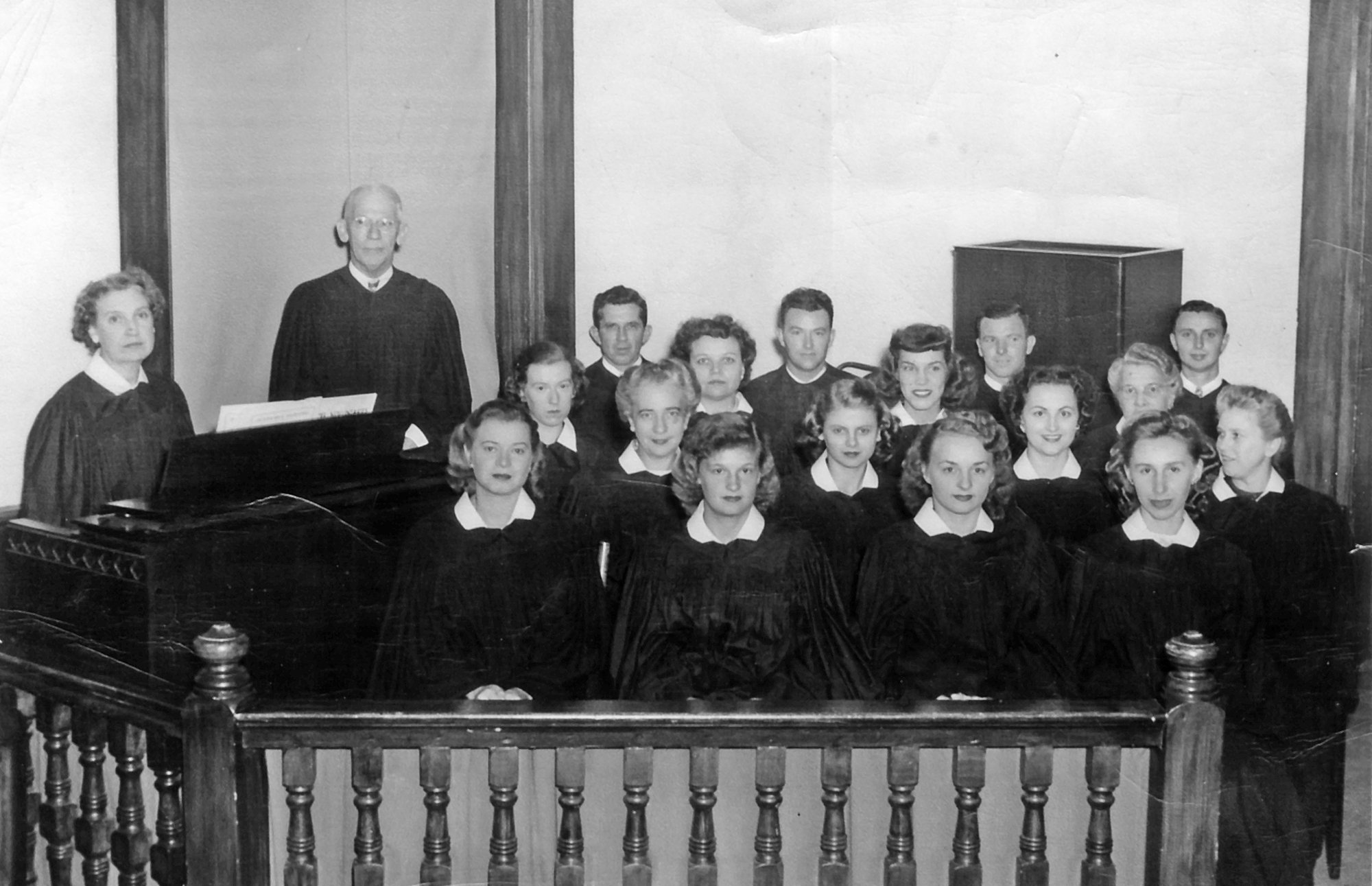Ashland Baptist Church
Photo 1: Historic photo of Ashland Baptist Church (date unknown).
Photo 2: Ashland Baptist Church Choir in 1950 with organist Virginia Jinkins and choir director Walter Sydnor (standing).
In 1859, a congregation of like-minded community members formed Ashland Baptist Church, and built themselves a small one room church. For 104 years, the building served the community as a church with the exception during the Civil War when it was used as a temporary hospital.
On the day the building was dedicated, there were so many people who showed up to celebrate the new beginning, the small church was not able to accommodate everyone. To remedy the problem, the pastor opened the window and conducted his first service by leaning out the window. For the next several years, the congregation of Ashland Baptist Church met for worship, fellowship, and friendship. Life was great and everyone loved their new little church. The RF&P even donated a bell for the church to use in its steeple.
But soon this small community would be changed by a war that would involve brothers, sisters, fathers, mothers, children, friends, neighbors, and relatives. And a whole Nation would soon be turned up side down by a civil war. In 1862, war was declared and the little country town of Ashland would never be the same. Young men from the town were drafted, trained as cavalry soldiers, and shipped out to fight in battles that sometime were just over the nearest hill.
As soldiers were injured in battle, Field Commanders would place them on trains and send them south to be cared for in towns located along the railroad tracks. Ashland received many of the seriously wounded, since they were so close to the battlefields. And soon more space was needed to accommodate the numerous injured and maimed.
To help the community the First Baptist Church of Ashland offered their building as a temporary wartime hospital. This arrangement lasted for the duration of the war. Records reveal that eleven soldiers lost their life while being cared for in the church; yet thousands received medical treatment. For only eleven to die one can only assume it was because the building was a special place.
Records have not been located to let us know when they built a second floor over the original floor, but it’s thought to have occurred sometime around the middle 1900’s. The second floor still covers the original floor and the bloodstains from the civil war. When you walk on the floor today you are walking over history.
From the late 1800’s through the early 1900’s little occurred that affected the congregation. In 1880, an addition was built on the rear of the church to include wings on the north and south side. One side was used for Sunday school, the other for the Pastor’s study, and the middle was used for the altar and choir. Sometime between 1899, and 1907, a columned porch was built across the entire front. In 1911, electricity was installed costing the congregation an enormous sum of $60. In 1912, what we call the stage area was remodeled to add more Sunday school classrooms and converted into a small auditorium.
In 1955, a new two-story Sunday school wing was built to the rear of the church with six classrooms on each floor. At the same time, a basement was dug out of the ground creating a fellowship hall. At this point the church leadership realized that any more expansion would have to involve a physical move.
Over the 104 years, several pastors came and went, the size of the congregation grew, decreased, and grew again, just like any other church. There is a legend about the church which involves the loss of the steeple and bell that cannot be substantiated by records. But the fact remains they are no longer part of the building. It’s said that around the early part of the 1900’s, the congregation had to sell their steeple and bell in order to pay the salary of their Pastor.
Records are not clear as to what happened, but apparently the Pastor had gone quite a few years without being paid any money. The congregation had fed and clothed the pastor and his family for several years, but he finally insisted that some money was required. Selling the steeple and bell satisfied their financial responsibility but it also changed the appearance of the small church forever.
By the late 1960’s, the congregation had finally outgrown their little building and plans were made to move. A new location was selected, a church built, and by the beginning of 1967 the congregation moved. Even to this day the First Baptist Church of Ashland can be found west of the town, which is a nice testament to their austere beginning in a small one room church, built along side the railroad tracks.
In 1969, the former church building was converted into a public non-profit community arts, education, and activities center continuing to serve the same community even into the next century. That organization is the Hanover Arts & Activities Center.


